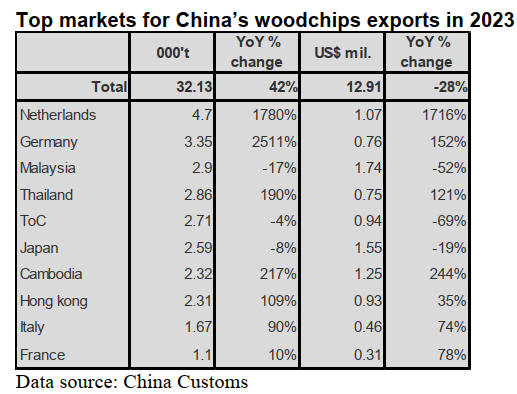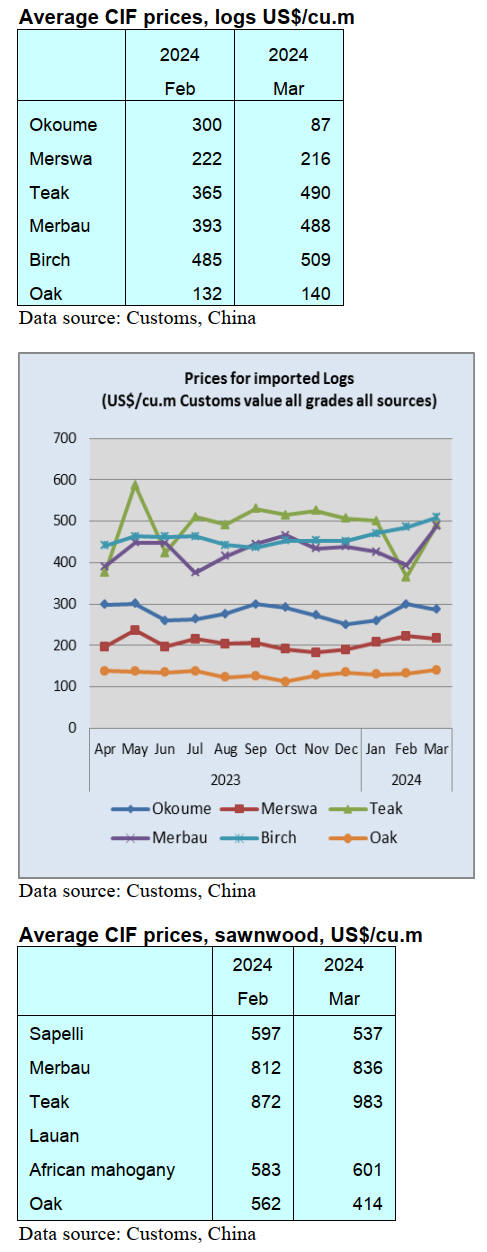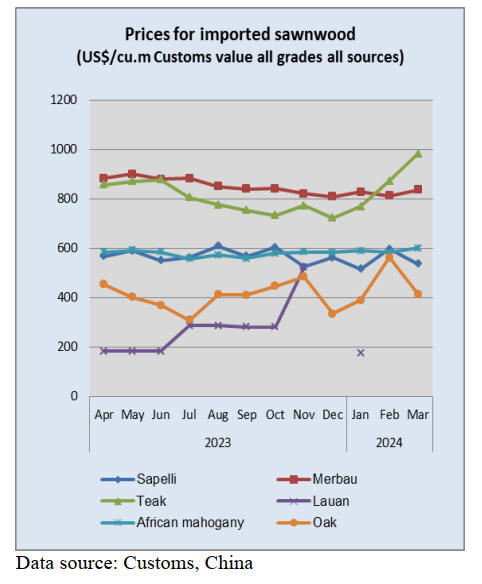US Dollar Exchange Rates of
25th
Apr
2024
China Yuan 7.24
Report from China
Home furnishing enterprises relocating
overseas
China's home furnishing manufacturing industry has been
steadily relocating overseas, in the past it was mainly
based on contract manufacturing for export back to China.
More and more of China’s home furnishing enterprises
have begun to expand and diversify their overseas
operations in recent years. Many well-known domestic
home furnishing companies announced that they would
open stores overseas with their own brands targeting the
Indian and Southeast Asian markets with mid-to-high-end
products.
The driving force behind the trend in relocating is the
weak domestic demand and a real estate market that will
take years to recover.
On the down side some overseas countries have low
urbanisation rates, an undeveloped real estate sector with
diminished potential and a weak domestic industrial base
whereas Chinese brands have begun to have international
competitiveness in design, production and marketing after
years of development.
The biggest issue for the long term for Chinese home
furnishing industries is that growth in domestic demand is
forecast to continue to decline due to the aging population,
falling birth rate and weakness in the housing sector.
According to data recently released by the National
Bureau of Statistics, retail sales of consumer goods in
2023 reached RMB47.15 trillion, an increase of 7% over
2022. After the epidemic containment measures were
lifted many sectors saw a rise in consumption for example
catering which increased by 21% year on year, jewelry
sales which increased by 13% and clothing, which
increased by 139%. However, furniture consumption only
increased by 3% and the consumption of construction and
decoration materials recorded a decline of 8%.
Many institutions predict that the annual transaction
volume for new homes will be only be maintained at about
1 billion square metres, down by about 40% compared to
the high point in 2018. This will affect the manufacturing
sector such as home furnishing. Businesses have assessed
there is no chance of expansion in the domestic market.
National policies have promoted the pace of home
furnishing enterprises relocation overseas. The
government encourages enterprises to "go global" and
provides a series of supportive policies and measures such
as tax incentives and financial support creating favorable
conditions for enterprises to expand overseas.
In late 2000 many Chinese home furnishing enterprises
chose to set up businesses in Europe and America but
more recently companies have vigorously targeted the
Indian and Southeast Asian markets. This is because these
countries have a large population and growing consumer
demand. As these economies expand and people's living
standards rise the demand for household products
increases.
These new target markets have cultures and consumption
habits closer to those in China which is conducive to the
rapid adaptation and integration of domestic household
enterprises into the local market.
In addition, the policy environment in India and Southeast
Asian countries is also relatively open providing a good
investment and development environment for domestic
household enterprises. Some countries, in order to attract
foreign investment and promote economic development,
provide tax incentives, land leasing and other preferential
policies reducing the establishment cost of incoming
enterprises.
Vietnam largest supplier for China’s woodchips
imports
According to China Customs, woodchip imports in 2023
totalled 14.63 million tonnes valued at US$2.948 billion,
down 21% in volume and 27% in value. The decrease in
woodchip imports was because imports from all the top
suppliers fell, except for Indonesia.
Vietnam was the largest supplier of woodchips imports in
2023, shipping 9.17 million tonnes, down 13% year on
year and accounted for 63% of total woodchips imports in
2023.
In contrast, China’s woodchips imports from Indonesia in
2023 rose 43% to 430,000 tonnes valued at US$106
million, surging 60% year on year.

Surge rise in China’s woodchips exports
China's exports of woodchips are very small but in 2023
there was a sharp rise in exports. China Customs ha
reported woodchip exports in 2023 totalled 32,130 tonnes
valued at US$12.91 million, surging 42% in volume but
down 28% in value over 2022.
The Netherland and Germany were the largest and the
second largest markets for wood chipsfrom China in 2023.
China’s woodchips exports to the Netherland and
Germany surged year on year and accounted for 15% and
10% of China’s woodchips exports in 2023. In addition,
China’s woodchips exports to Thailand, Cambodia, Hong
Kong, Italy and France rose. In contrast, China’s
woodchips exports to Malaysia, Taiwan P.o.C and Japan
in 2023 fell 17%, 4% and 8% respectively over 2022.

Development trends in wood-based panel production
Plywood production is still the largest among wood-based
panels in China. At the beginning of 2024 there were
1,477 plywood plants under construction nationwide with
a total annual production capacity of about 29 million
cubic metres.
At this level it has been suggested the capacity of China's
plywood industry is greater than demand. While the
supply and demand of plywood for furniture production,
home furnishing and interior decoration is relatively
balanced there is over-capacity in plywood for concrete
formwork. In addition, demand in the packaging sector, is
affected by competition from oriented strand board (OSB).
It is expected that plywood production capacity in China
will shrink to about 200 million cubic metres annually by
the end of 2024.
Overheated investment in particleboard production
Particleboard production capacity of in 2023 exceeded that
of the fibreboard industry and became the second largest
among wood-based boards in China.
At the beginning of 2024 fifty eight particleboard
production lines were under construction nationwide with
a total capacity of 20 million cubic metres annually. Seven
regions in East, South, Central, North, Southwest,
Northwest and Northeast have particleboard production
lines under construction including 45 continuous flat-press
production lines with a capacity of 18 million cubic metres
annually and accounting for over 90% of the mills under
construction.
Investment in China's particleboard industry is seen as
overheated and there is a risk of imbalance between supply
and demand. Particleboard production lines under
construction will be put into operation from 2024 to 2025
and it is expected that the total capacity of particleboard in
China will exceed 65 million cubic metres annually by the
end of 2024.
Fibreboard supply exceeds demand
Fibreboard production is third largest among wood-based
panels in China. There were two production lines under
construction at the beginning of 2024 in China with a total
production capacity of 390,000 cubic metres annually.
These mills are in Shandong Province, eastern China and
all are continuous flat-press production lines. China’s
fibreboard production capacity exceeds current
consumption. The enduse where there is growth in demand
is the home furnishing and inner decoration market where
medium thick fibreboard is in demand. It is expected that
the production capacity of fibreboard plantss in China will
decline by the end of 2024 dropping to to less than 45
million cubic metres annually.
GGSC China indices for March
In the first two months of 2024 China's exports of
furniture and furniture parts surged by 36% year-on-year
to US$11.916 billion, making a good start for this year.
However, the country's cumulative imports of logs and
sawn timber in the same period were down 5% year-on-
year to 9.546 million cubic metres suggesting that the
recovery had taken hold.
In March China accelerated the elimination of restrictive
measures implemented for many years in the property
market as many cities adjusted their real estate policies
and it is hoped this move will drive a new round of home
building and furniture consumption. For example,
Shenzhen terminated the 18-year-old "70/90 Policy" on
residential housing.
Under this policy 70% of housing units in any new
residential building project shall be below 90 square
metres. In Beijing the government abolished the policy
that prohibited certain divorced persons from purchasing a
residential property in the city within three years after their
divorce.
Shipping disrupted
As the Red Sea transport crisis continues China's timber
shipping routes to Europe have been disrupted. In
addition, a number of shipping companies, including
Maersk, CMA CGM, Hapag-Lloyd and Wan Hai recently
announced that they would increase freight rates for Asian
export routes.
For example, Wan Hai, which started primarily as a raw
log shipping company, announced that, due to rising
operating costs, it would increase freight rates for cargo
from China to Asia. It is reported that beginning March
this year, there has been a US$50 increase for small
containers and a US$100 increase for large containers.
Impressive business expansion
In March, the GTI-China index registered 66.8%, an
increase of 35 percentage points from the previous month
and rose above the critical value (50%) after 3 months
indicating that the business prosperity of the enterprises
represented by the GTI-China index expanded from last
month.
The dramatic increase is due, in large part, to the fact it
grew from low base value in the previous month when
there was a long holiday break.
After enterprises resumed production and operation in
March both the new orders index and the production index
increased significantly and the overall performance of the
timber industry in China picked up. As for the 11 sub-
indexes, only the inventory index of main raw materials
was below the critical value of 50%, while the remaining
10 sub-indexes were all above the critical value.
See:
https://www.itto-ggsc.org/static/upload/file/20240418/1713424567120852.pdf
 
|